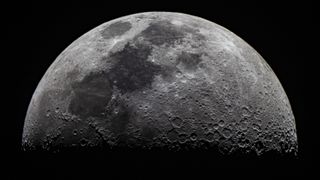
The Geminid meteor shower peaked overnight on Dec. 13 and 14, lighting up the skies as impressive meteors struck Earth's atmosphere. But Earth wasn't the only target; the moon is regularly bombarded with such meteors, and Daichi Fujii, the curator of the Hiratsuka City Museum in Japan, has captured some of the most recent collisions.
Fujii documented meteor impacts on the moon on Dec. 6, Dec. 7 and twice on Dec. 8, 2024, using cameras set to monitor Earth's nearest neighbor. You can view some of his lunar impact videos (as well as some impressive fireballs) on his X account.
"There was another lunar impact flash tonight. I filmed it at 360fps from my home at 22:34:35 on December 8, 2024 (slow playback) and was able to confirm it with multiple telescopes. Bright meteors and fireballs have been appearing every day, but lunar impact flashes have also been captured one after another," Fujii wrote in a post on X on Dec. 8.
今夜はもう1つ月面衝突閃光がありました。2024年12月8日22時34分35秒に自宅から360fpsで撮影し(スロー再生)、複数台の望遠鏡で確認できました。連日明るい流星や火球が流れていますが、月面衝突閃光も続けて捉えられています。 pic.twitter.com/iHUq9EuXQgDecember 8, 2024
This isn't the first time Fuijii has witnessed such an impact. In February 2023, he recorded another impressive video of a meteor smashing into the moon.
Related: Ursid meteor shower 2024: Where and when to see the final meteor shower of the year
It's unclear if the recent lunar impacts captured by Fujii are the product of the Geminid meteor shower or simply the result of sporadic meteors. When asked about the possible origin of these meteors, Robert Lunsford, of the American Meteor Society, told EarthSky, "While it’s a bit early for strong Geminid activity, it's possible that these are Geminid meteors as they are striking the moon from the expected direction."
Lunsford suggested that, if they are indeed Geminid meteors, the rate of lunar strikes is quite extraordinary, as even during the Geminid maximum, it's more typical to see less than one visible strike per night.
土星食終了後に月面衝突閃光がありました!2024年12月8日19時41分33秒に自宅から620fpsで撮影し、複数台の望遠鏡で捉えました(スロー再生)。月は大気がないため流星は見られずクレーターができる瞬間に光ります。まだデータ整理中ですが、6日17時26分27秒と7日18時3分6秒にも閃光を確認できています。 pic.twitter.com/QPmgJVMgQlDecember 8, 2024
Given the moon's history with Geminid impacts, there is a good chance that at least some of these meteor strikes were Geminids. In 2015, NASA published a study on Geminid meteor shower lunar impact observations and found 19 such strikes in 2006 and 21 in 2010. Astonishingly, 55% of all impacts witnessed on the moon in 2010 were attributed to the Geminids.
However, Fuijii is not ruling out the possibility that they are simply sporadic meteors. "Given the position of the radiant, there is a possibility that these lunar impact flashes are associated with the Geminid meteor shower. However, since sporadic meteors still outnumber Geminids in ground-based meteor observations, they may be sporadic meteors," Fujii told EarthSky.
Why do the impacts look like bright flashes?
As the moon has virtually no atmosphere, when an object strikes the moon it does so at high speeds with nothing to slow it down. When a meteoroid collides with the moon, most of the energy from the impact is converted into heat and the formation of a crater. A smaller amount of the energy, however, is released as visible light, creating a bright flash at the collision site, according to NASA
If you want to keep a watchful eye on our lunar companion check out our moon viewing guide. Looking for some new gear? Our best telescopes guide and best binoculars guide are a great place to start.
Originally posted on Space.com.


评论(0)